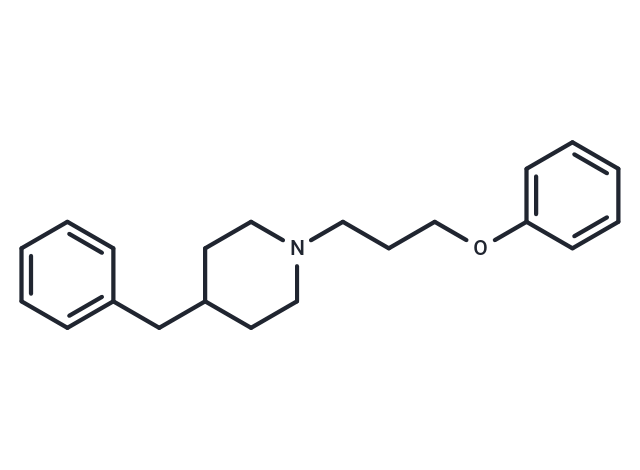Shopping Cart
Remove All Your shopping cart is currently empty
Your shopping cart is currently empty
S1R agonist 2 is a selective S1R agonist with a Ki of 88 nM for S2R and 1.1 nM for S1R and is protective against ROS and NMDA-induced neurotoxicity.

| Pack Size | Price | USA Warehouse | Global Warehouse | Quantity |
|---|---|---|---|---|
| 2 mg | $34 | - | In Stock | |
| 5 mg | $56 | In Stock | In Stock | |
| 10 mg | $89 | In Stock | In Stock | |
| 25 mg | $172 | In Stock | In Stock | |
| 50 mg | $261 | - | In Stock | |
| 100 mg | $386 | - | In Stock | |
| 200 mg | $545 | - | In Stock |
| Description | S1R agonist 2 is a selective S1R agonist with a Ki of 88 nM for S2R and 1.1 nM for S1R and is protective against ROS and NMDA-induced neurotoxicity. |
| Targets&IC50 | σ1 receptor:1.1 nM (Ki), σ2 receptor:88 nM (Ki) |
| In vitro | S1R agonist 2 (Compound 8b; 0.1-5 μM) significantly increases neurite growth induced by nerve growth factor (NGF) in a dose-dependent manner and has a neuroprotective effect on NMDA stimulation in SHSY5Y cells. At 1 μM (24 hours), it significantly inhibits cell damage induced by Rotenone in SHSY5Y cells and shows no cytotoxicity to A549, LoVo, and Panc-1 cells (0-10 μM; 24-72 hours).[1] |
| Molecular Weight | 309.45 |
| Formula | C21H27NO |
| Cas No. | 150085-21-5 |
| Smiles | C(C1CCN(CCCOC2=CC=CC=C2)CC1)C3=CC=CC=C3 |
| Storage | Pure form: -20°C for 3 years | In solvent: -80°C for 1 year | Shipping with blue ice/Shipping at ambient temperature. | |||||||||||||||||||||||||||||||||||
| Solubility Information | DMSO: 50 mg/mL (161.58 mM), Sonication is recommended. | |||||||||||||||||||||||||||||||||||
| In Vivo Formulation | 10% DMSO+40% PEG300+5% Tween 80+45% Saline: 2 mg/mL (6.46 mM), Sonication is recommended. Please add the solvents sequentially, clarifying the solution as much as possible before adding the next one. Dissolve by heating and/or sonication if necessary. Working solution is recommended to be prepared and used immediately. The formulation provided above is for reference purposes only. In vivo formulations may vary and should be modified based on specific experimental conditions. | |||||||||||||||||||||||||||||||||||
Solution Preparation Table | ||||||||||||||||||||||||||||||||||||
DMSO
| ||||||||||||||||||||||||||||||||||||
| Size | Quantity | Unit Price | Amount | Operation |
|---|

Copyright © 2015-2025 TargetMol Chemicals Inc. All Rights Reserved.